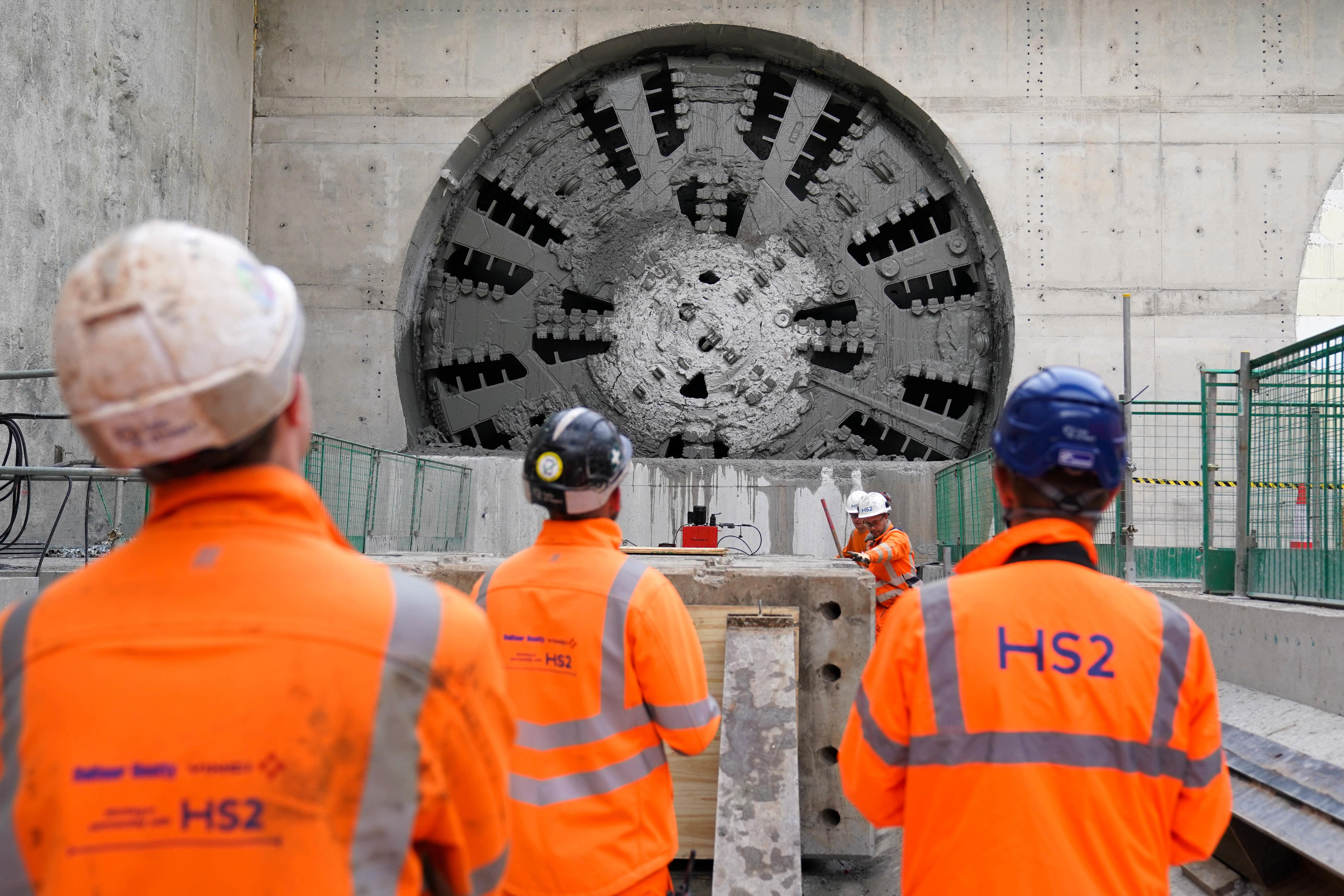Diggers to be buried at HS2 station to await green light on Euston extension
The machines will be kept in an underground chamber at Old Oak Common, ready to start tunnelling should the central London leg get the go-ahead.

Engineers building the Old Oak Common station in west London are looking to future-proof Euston as the final terminus of HS2 with diggers buried on site.
Two tunnel boring machines will be lowered into an underground chamber at Old Oak Common next year to await the green light from ministers on extending the high-speed rail route into central London — its originally intended destination.
It comes after Transport Secretary Mark Harper announced in March that work at Euston would be paused for two years as costs had ballooned to £4.8 billion compared with an initial budget of £2.6 billion.
We will actually store them to be used once there is a Government decision to progress on towards Euston
The pause means Old Oak Common will be the high-speed railway’s only London station when services to and from Birmingham begin.
Passengers travelling to and from central London will need to take Elizabeth line services to continue their journey into the heart of the capital.
Huw Edwards, HS2 Ltd’s project client for Old Oak Common, said “nothing” his construction team was doing would “preclude continuation of the railway to the destination that we all want, which is Euston”.
Speaking from the work site, he told the PA news agency: “We will be dropping two tunnel boring machines into the HS2 box here towards the east end, in the Euston direction, during next year.
“When we do that, we will actually store them to be used once there is a Government decision to progress on towards Euston.”
While HS2 passenger services are not due to begin for at least six years, Mr Edwards said the pair of German-built diggers needed to be lowered into the holes in 2024 to allow for additional train tracks to be built over the top, with the Great Western main line to be widened as part of the Old Oak Common development.
“We cannot wait, otherwise we would not be able to open the widened conventional station,” Mr Edwards continued.
“However, what we are not doing, we are not precluding tunnelling in the future in the Euston direction, to that destination.”
Should the Old Oak Common to Euston leg — a distance of around five miles — be given the go-ahead, Mr Edwards said the tunnelling work and the daily operation of the major transport hub in the west London suburbs “could happen in parallel if necessary”.
The two boring machines will be named and blessed in a ceremony — with a statue of St Barbara, the patron saint of tunnelling, used during the Christian service — before they are lowered into a deep chamber next year and covered over to await their potential dig towards Euston.
With the diggers potentially due to be stored for years, engineers will be sent down to routinely carry out maintenance on the two heavyweight machines.
The diggers will be positioned underground so that tunnelling work can be carried out immediately if ministers approve the Euston development, without the machines needing to be moved and with the freshly laid train tracks above unaffected.
HS2 was initially scheduled to open in 2026, but this has been delayed to between 2029 and 2033 due to construction difficulties and rising costs.
HS2 trains are now not expected to run to Euston until 2041 at the earliest.
Prime Minister Rishi Sunak has said he is committed to delivering the Euston terminal despite reports earlier this year suggesting Old Oak Common could become the permanent London terminus for HS2 due to growing concerns over costs.
Mr Edwards, who also worked on the 1990s Jubilee line extension to Stratford during his career, said modelling carried out by HS2 suggested travellers could continue to alight at Old Oak Common even when the high-speed route was extended to Euston due to its connections into London’s shopping and finance districts.
Mr Edwards said: “I think what we will probably see when Old Oak Common comes on stream is people will realise that the connection to the Elizabeth line, giving direct connection to the West End, the City and Canary Wharf, is actually a connection that people didn’t realise was going to be there.
“I’m not expecting, and my understanding from the wider HS2 team is, we are not expecting all those people who couldn’t go to Euston initially to then switch onto that Euston journey because we think a proportion will have realised that actually the onward journey … is actually good from Old Oak Common.
“The other thing is that people will get into a working regime, a knowledge and usage of Old Oak Common, and we think – we expect – a series of those to stay with that journey.”
Old Oak Common, which has a £2.5 billion budget, will be the UK’s largest newly built railway station when opened.
Its 14 platforms, with six dedicated to high-speed services, are expected to be able to handle around 250,000 passengers per day when HS2 is fully developed.
Fast trains running from Birmingham Curzon Street will be the first to arrive into Old Oak Common’s platforms, with the Birmingham to Crewe leg of HS2 delayed by at least two years.
Bookmark popover
Removed from bookmarks